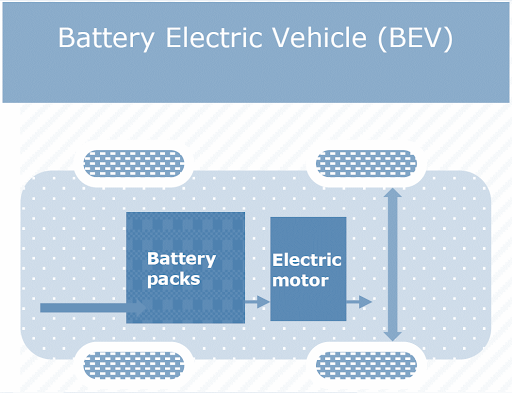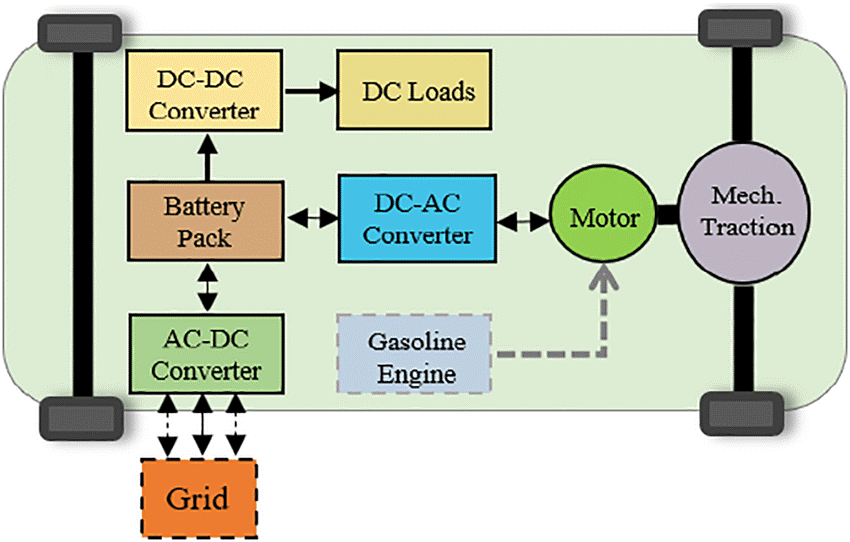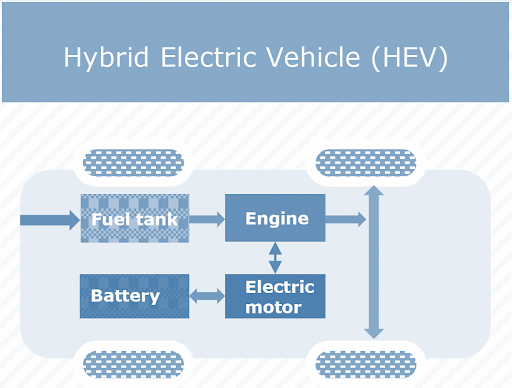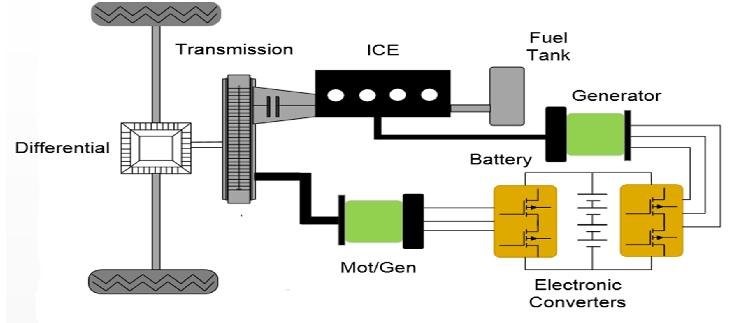Electric Vehicles:
An electric vehicle (EV) is an automobile that makes use of one or more electric-power systems for propulsion. The electric vehicles are powered by the energy stored in a collector system of an extravehicular source. Even they could be powered independently by using a battery (every so often charged with the aid of using solar panels, or with the aid of using changing gasoline to energy the use of gasoline cells or a generator).
Electric vehicles are not limited only to street and rail motors but also include underwater vessels, electric-powered spacecraft, and planes. EVs first got here into life within side the overdue nineteenth century, while energy became a few of the desired strategies for motor automobile propulsion, supplying a stage of consolation and simplicity of operation that couldn’t be finished with the aid of using the fuel motors of the time. Internal combustion engines have been the dominant propulsion technique for motors and vans for approximately a hundred years, however, electric-powered energy remained common in different automobile types, which include trains and smaller motors of all types.
TYPES OF ELECTRIC VEHICLES:
A total of Four types of electric or alternative fuel vehicles are available.
1.BEVs:
The BEVs stand for battery electric Vehicles.


The BEVs are fully powered by electricity. And these vehicles are more efficient in comparison of hybrid and plug-in hybrid vehicles.
BEVs are also known as All-Electric Vehicles (AEV). The Electric Vehicles based on BEV technology runs completely on a battery-powered electric drive system. In BEVs, the electric power used to run the vehicle is primarily stored in large batteries and these batteries can be charged by plugging this into the electric power grid. The charged batteries give power to the electric motors, which then give motion to the electric car.
Main Components of BEVs:
The BEVs’ main components are an electric motor, Inverter, Battery, Control Module, and Drive train.
- Electric Motor
- Power Inverter
- Battery Pack
- Charging port
- Onboard Charger
- Power electronic control module
- Auxiliary batteries.
Working Principles of BEVs:
The DC battery power is converted to AC power and transferred to the electric motor. And while the accelerator pedal is used to press, the controller unit receives a signal and regulates the speed of the vehicle by making the required changes in the frequency of the AC power coming from to inverter to the motor. And it leads the wheel to turn through a gearwheel. When the vehicle decelerates and the brake is applied the motor acts as an alternator and generates power to charge the battery.
Examples of BEVs:
A few common examples of battery-electric vehicles on road are:
- Tesla Model 3.
- Tesla X.
- Toyota Rav4.
- BMW i3.
- Karma Revera.
- Kia Soul.
- MG ZS
- TATA Nexon
- TATA Tigor
- Mahindra E20 plus
- Hyundai Kona
- Mahindra Verito
2.HEVs:
The HEVs stand for hybrid electric vehicles.


Hybrid electric vehicles are categorized into two types: –
i). Hybrid Electric Vehicle(HEVs)
ii). Plug-in Hybrid Electric Vehicles (PHEVs)
i) HEVs:
- The Hybrid Electric Vehicle uses both an internal combustion engine (ICE) (a petrol/diesel engine) and a battery pack with electric motors to run.
- It is powered by the electric motor which runs through the energy stored in batteries, either by the Internal combustion engine or both.
- HEVs are not very efficient in comparison with fully battery electric or plug-in hybrid vehicles.
- The powertrains of a hybrid electric vehicle are designed to power the cars in series, parallel, or series-parallel (power split) methods.
#Series HEV:
In a series of hybrid electric vehicles, only the electric motor is used to drive the vehicle whereas the internal combustion engine gives power to the generator which in turn recharges the battery.
#Parallel HEV:
The parallel hybrid electric vehicle is based on driving conditions. And this uses the best available power source to propel the vehicle. For the continuous movement of the vehicles, the driving power is alternated between the battery electric motor and the internal combustion engine.
#Series-Parallel HEV:
The series hybrid electric vehicle is a combination of both the series and the series-parallel and gives split power. In this, the power is routed from the internal combustion engine alone or from the battery electric motor to drive the vehicle.
- In a Hybrid electric vehicle, the battery is charged through a regenerative braking system. The regenerative braking system (RBS) gives better braking efficiency in dense traffic while running in the city. This enhances better fuel economy and also reduces carbon emissions. This also minimizes energy wastage and gives energy optimization.
Main Components of HEV:
The main component of HEVs are:
- A Conventional Internal Combustion Engine,
- Fuel Tank & Fuel Filter,
- Transmission & Exhaust System,
- A battery pack
- An electric generator
- AC/DC converter / Inverter
- Power electronic control module
- Thermal System(For Working Temperature Maintenance)
Working Principles of HEV:
In HEVs, the internal combustion engines get energy from the fuel i.e. either from gasoline(petrol/diesel) or from other types of fuels, and the electric motor runs with the help of a battery. The electric motor and the engine rotate the transmission altogether and move the wheels.
Examples of HEV:
- Honda City Hybrid
- Toyota Innova Hycross
- Ferrari 296 GTB
- Toyota Urban Cruiser Hyryder
- Volvo XC90
- Toyota Vellfire
- Toyota Camry
ii). PHEVs:


The PHEVs use both the internal combustion engine and battery packs. The batteries are charged from an external plug-in socket. In PHEVs, the battery charging is done with external electric power instead of charging internally with the engine power. In addition, Plug-in Hybrid vehicles are more efficient than simple hybrid vehicles but it is less efficient than Battery electric vehicles.
The PHEVs are a series of hybrid vehicles with both engines and motors. These vehicles can run on conventional fuels like petrol/diesel or alternative fuels like biodiesel. And this can also be charged and powered by a rechargeable battery. The battery can be charged with external electric power points.
The PHEVs can run in 2 modes:
- The All-Electric Mode vehicles, in which the motor and battery generate and supply all the power to the vehicles.
- The other mode is the Hybrid Mode, where both electricity and gasoline fuel petrol/diesel are used.
Main Components of PHEV:
The major components of PHEVs are:
- A Conventional Internal Combustion Engine,
- Fuel Tank & Fuel Filter,
- Mechanical Couplings(Transmission) & Exhaust System,
- A battery pack
- An electric generator
- AC/DC converter / Inverter
- Battery Charger (If onboard Model)
- Energy Storage System
Working Principles of PHEV:
The PHEVs start up in an all-electric mode and run using electricity until their battery pack is depleted.
In this type of vehicle, when the battery gets discharged or drains out, the engine comes into action, and the vehicle starts operating as a conventional gasoline engine vehicle i.e. non-plug-in hybrid vehicle. The PHEVs can be charged by plugging into an external electric power source. And also through an engine or regenerative braking system. In a regenerative braking system, when brakes are applied, the electric motor acts as a generator, and the energy generated is used to charge the battery. Also, PHEVs relatively smaller engines can be used as this is supported by the electric motor. This combination increases the car’s fuel efficiency without compromising performance.
Examples of PHEV:
The common PHEVs on road are
- Porsche Cayenne S E-Hybrid,
- BMW 330e,
- Porsche Panamera S E-hybrid,
- Chevy Volt,
- Chrysler Pacifica,
- Ford C-Max Energi,
- Mercedes C350e,
- Mercedes S550e,
- Mercedes GLE550e,
- Mini Cooper SE Countryman,
- Ford Fusion Energi,
- Audi A3 E-Tron,
- BMW i8,
- BMW X5 xdrive40e,
- Fiat 500e,
- Hyundai Sonata,
- Kia Optima,
- Volvo XC90 T8.
3.FCEVs:
The FCEVs stands for fuel cell electric vehicles.

In fuel cell electric vehicles, the electric energy is produced from chemical energy.
For example, hydrogen fuel energy.
The FCEVs are Zero-Emission Vehicles. The FCEVs work on ‘fuel cell technology’ to produce the electricity essential to run the vehicle. In this system, the chemical fuel energy is directly converted into electrical energy.
Main Components of FCEV:
The major components of PCEVs are:
- Electric Motor
- Fuel Cell Stack
- Hydrogen Storage Tank
- Battery
- DC-DC Converter
Working Principles of FCEV:
In, Fuel–cell electric vehicles the propulsion system is similar to other electric vehicles. The FCEV produces the required electricity to propel the vehicle by itself only. The energy is stored as hydrogen and is converted to electricity by fuel cells. In addition, the FCEV doesn’t produce any harmful tailpipe emissions as there is no combustion of any fuel like the internal combustion engines.
Examples of FCEV:
The major FCEVs are:
- Toyota Mirai,
- River simple Rasa,
- Hyundai Tucson FCEV,
- Honda Clarity Fuel Cell,
- Hyundai Nexo.
Conclusion:
Electric vehicle is the alternative fuel vehicle. These vehicles are the revolution of the automotive industries. The future of automobile is only based on the upcoming electric and other alternative fuel vehicles.
The governments globally is providing huge rebates and incentives to support the manufacturers and also to attract the customers.
The state governments are also giving extra incentives at their own level to promote the EVs.
Many manufacturers through out the globe are coming ahead to produce and promote their electric, hybrid and other alternative fuel vehicles at a very large scale.
Companies like Tesla, Toyota, Mercedes, Ford, Volvo, Tata, Maruti, Mahindra are already competing themselves to give a better product at a better price to their consumers.
Now is the time to switch for better mobility and move with zero or fewer emission options.



강남하이퍼블릭
강남하이퍼블릭
Thank you for your good blog종로노래방알바
Thank you for your good blog종로노래방알바
There is definately a lot to find out about this subject. I like all the points you made
Thanks for the positive response, please suggest another topic Electric vehicles or alternative fuel vehicles, if you want to know or discuss in detail.
Hmm it seems like your site ate my first comment (it was super long) so I guess I’ll just sum it up what I wrote and say, I’m thoroughly enjoying your blog. I too am an aspiring blog blogger but I’m still new to the whole thing. Do you have any helpful hints for beginner blog writers? I’d definitely appreciate it.
Yes, consistency is must for positive result.
I抣l immediately grab your rss as I can not find your email subscription hyperlink or e-newsletter service. Do you’ve any? Kindly allow me recognise in order that I may just subscribe. Thanks.
I used to be very pleased to find this internet-site.I wanted to thanks in your time for this wonderful read!! I definitely having fun with every little little bit of it and I’ve you bookmarked to take a look at new stuff you blog post.
Good day! This is my 1st comment here so I just wanted to give a quick shout out and say I really enjoy reading your articles. Can you suggest any other blogs/websites/forums that deal with the same topics? Thanks for your time!
This website online can be a walk-via for the entire info you wanted about this and didn抰 know who to ask. Glimpse here, and you抣l positively uncover it.
I’m not sure exactly why but this blog is loading very slow for me. Is anyone else having this issue or is it a issue on my end? I’ll check back later on and see if the problem still exists.
I have not checked in here for some time since I thought it was getting boring, but the last few posts are great quality so I guess I’ll add you back to my daily bloglist. You deserve it my friend 🙂